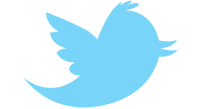
In the 2016 Presidential election, social media has played an important role for both candidates’ campaigns. (Courtesy of Flickr).
By Emma Carey
Presidential candidates Hillary Clinton and Donald Trump had their face-off debut at the first 2016 presidential debate this past Monday. However, as many Americans have witnessed this election season, this was not the first conversation between the two. While Clinton and Trump have both led two of the most unique campaigns in U.S. history, one distinct factor in this year’s ground-breaking campaigns is their incorporation of social media.
With a technological shift evident within U.S. communications in the past four years, it comes as no surprise to many Americans that social media has become a major lever in this year’s presidential election. In fact, according to a January 2016 survey conducted by the Pew Research Center, 44 percent of U.S. adults and two thirds of Americans aged 18 to 29 claimed to have used social media in the past week in order to learn more about the 2016 presidential election.
In addition, 24 percent of american adults said they had turned directly to the personal accounts of the candidates for such information. These statistics are particularly significant when taking into account the additional 15 percent of adults who claimed to have turned to candidates’ websites or e-mails.
Clinton and Trump, perhaps better known as @HillaryClinton and @realdonaldtrump to the masses, have both chosen to use this clear draw toward social media to their advantage. Upon a single visit to each candidate’s Instagram or Twitter profiles, one’s smartphone screen is filled with campaign content. The “aesthetic” of these posts? Gloves off. It seems that virtually nothing has settled between the two since Clinton’s “Delete your account”-heard-round-the-world this past June.
Recent posts on Trump’s Instagram account, such as “Hillary Clinton: Failed All Over the World” and “Hillary’s Bad Tax Habit,” each promote a fast-fact-formatted advertisement in opposition to Secretary Clinton. Clinton, on the other hand, sports a “meme”-esque video of herself, captioned “When Donald Trump says he’s more temperamentally fit to be president than you. #DebateNight.”
Within this snippet of each candidate’s condensed accounts, a Candidate diverges from traditional campaign etiquette. However, as researchers have come to conclude, this shift from press releases to re-tweets might be the future of presidential elections as we know them.
If a direct correlation exists between Twitter presence and the popular vote, Trump might be trail blazing this movement. “One thing that Trump does is he will combine two or three issues in a single statement or proposal,” said Frank Speiser, SocialFlow’s co-founder and chief product officer in an April edition of the San Francisco Chronicle. “Now, he may be muddling them, but it doesn’t matter because it activates groups that are interested in all of the above.”
By simply stirring the pot on a candidates are given the opportunity to grab voters’ attention and involvement. With approximately 1.6 billion monthly active Facebook users and 385 million monthly active Twitter users today, such strategies could mean a serious expansion in candidates’ campaign teams.
What these campaign teams will be effective ultimately lies in the demographics of this year’s voters. With such a clear gap between the involvement of millennials and adults on social media throughout this year’s presidential election, the effectiveness of a social media campaignis still highly up for debate.
Traditional campaigning strategies, such as TV advertisements, could still very well dominate the 2016 presidential campaign — that is, depending upon who shows up to the voting booths. If millennials choose to take their newfound voting rights and run with them, the outcome of this year’s election could very well be highly affected by Clinton and Trump’s social media efforts.
This campaign will be a major test run for what could be an entirely new approach to presidential campaigning. Social media, while a significantly less reliable source than most traditional campaigning mediums, provides candidates a cost-effective and efficient way to reach voters.
A candidate’s preference for shock value over quality in social media content has and could continue to seriously skew presidential elections if social media does take the reigns. Candidates, press and potential voters will all have to adjust to these new strategies accordingly in order to make for an educated and fair presidential election.
